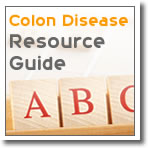The Colon & Rectal Clinic of Ft. Lauderdale


CRC Ft. Lauderdale believes in the power of knowledge. We offer the most current information on colon disease and minimally invasive procedures.
Conditions of the colon vary by severity; some cause mild irritation while others can be life-threatening.4 Information about the diagnosis of colon disease is presented here, as well as information about five types of colon disease.
The key to early detection of colon disease is a patient’s willingness to seek medical attention. The physician generally will perform the following:
Medical history: The patient's medical history will identify the presence of risk factors for colon disease.
Stool exams to detect occult (hidden) blood: Colon disease may cause the shedding of minute quantities of blood, so examination of the stool for occult blood is an important procedure.
Sigmoidoscopy: This is a visual exam of the rectum and lower colon using a lighted, flexible endoscope. It allows for the direct detection of colon tumors.
Colonoscopy: This procedure examines the entire five to six feet of the colon. The physician inserts a long, flexible, lighted tube into the rectum and slowly guides it into the colon. The scope transmits an image of the inside of the colon so the physician can carefully examine its lining. The exam is usually done under sedation.
Barium enema: This x-ray exam is an older exam that, at times, is still useful. Barium flows into the colon and x-rays are taken that then can outline the shadows of any signs of colon disease.
On the sub pages listed below you will find user-friendly descriptions of the diseases of the colon, lists of their symptoms and causes, and information about minimally invasive procedures (MIP) as a treatment option.
You will also find a description of MIP surgery contrasted with open surgery, plus comparisons between MIP and open surgery in terms of:
Average length of hospital stay
Length of time a patient needs pain medication
Size of the scar
Recurrence rates
Survivability
Operating time
Learn more about